Retrospective: Wolfenstein 3D
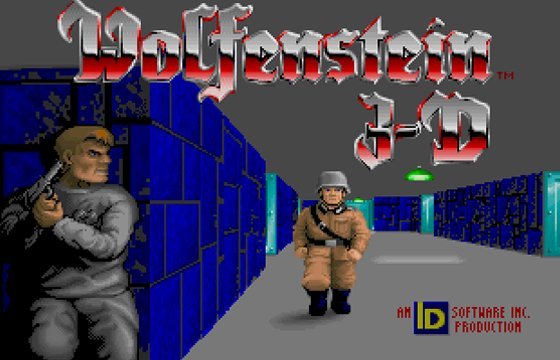
Hello there! Today I want to take a look at a game I had tangents with in my childhood, namely Wolfenstein 3D. At the time, I did not know what a game developer was, or that you could buy games. For me, they came already installed on the PC. Anyway, I saw a resemblance between Wolfenstein and another game I had at the time, DOOM II. Same style of heads-up display, with the protagonist's face taking center stage.
The Grandfather of FPS

Erroneously, people call Wolfenstein 3D the granddaddy of first person shooters, although there were several games of this kind before it, most notably MIDI Maze (1987) on the Atari ST and Mac which was actually a multiplayer game with up to 16 players through system linking. Continuing on this slope, id Software themselves put out Hovertank 3D (1991) which was more about navigating a maze and finding humans to save than shooting the enemies and Catacomb 3D (also 1991) which was the third Catacomb game, a clone series of the arcade game Gauntlet. These are only some notable examples, but I wandered off a bit much already.
The History

Wolfenstein 3D started as the wish of the guys at id Software to bring the original Wolfenstein games (made by Silas Warner) into the third dimension. These games were top down stealth games in which you had to go through a randomly generated Nazi castle while avoiding or shooting guards, the latter attracting the attention of nearby guards and by using disguises. The games are primitive in their execution, having an archaic control scheme, but the general idea of them is actually novel to this day. Just search stealth rogue-lites and you already cover a lot of ground.
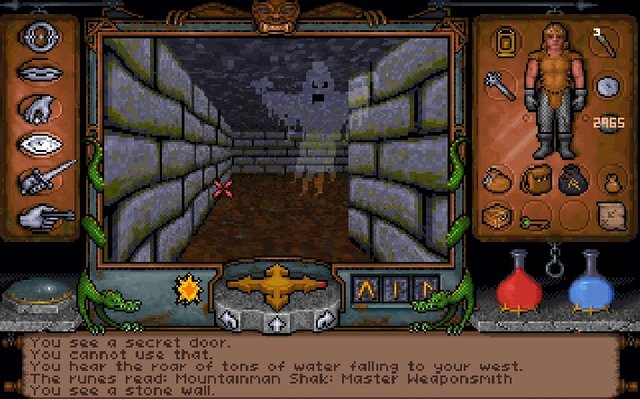
Another very important influence was a tech demo of Ultima Underworld: The Stygian Abyss, which featured a true 3D environment, with slopes, gaps, angled walls, inertia simulation and many other mindblowing features. John Carmack, the programmer at id and genius in general, went on to say that he could make a faster version of this tech, and he did in a way, but sacrificed everything but the 3D looking space in the process. This emphasis on speed and hardware limitations lead to the scrapping of most of the stealth elements like moving bodies and brought us the game we have today. The only leftover from the stealth systems is the fact that enemies in other rooms react to the sound of gunfire.
The Game
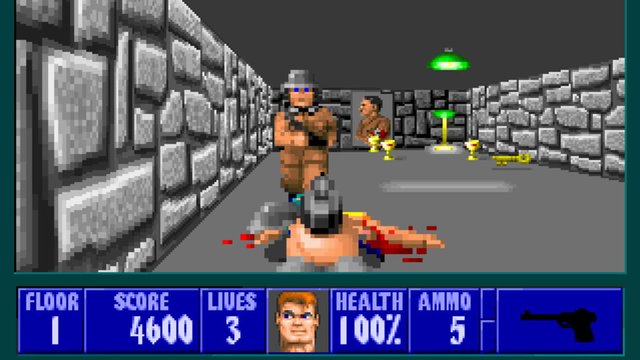
You start off in a cell, knife in hand, with a dead Nazi in front of you. It is very clear what traspired and it is time for you to grab his weapon and make a break for it. The halls are full of guards and guard dogs, all ready to turn you into minced meat. Get Psyched! And people did just that. The game was fast and smooth like nothing before it and quite violent for the times, but the controversy only brought more people to it.

Gameplay-wise, you have 4 weapons: a knife, which only serves as a last resort, a pistol, a machine gun, which is the workhorse of the combat and a minigun, which shreds through enemies and ammo alike, but has the least accuracy. You run around through maze-like levels, shooting Nazis, searching for treasure to increase your score and food to replenish you health and spamming the interaction key on walls to find secrets. It is simple, easy to pick up and fun. By today's standards it is also, evidently, archaic, but it is not impossible to enjoy. At the end of each episode, you face a boss, which is usually a damage sponge who can also melt your health bar if it catches you off your guard. It must be mentioned that the game features some arcade remains from its predecessor, Catacomb 3D, mainly the lives system and the tracking of score, these things being juxtaposed to the simplicity of having a save system in the game.
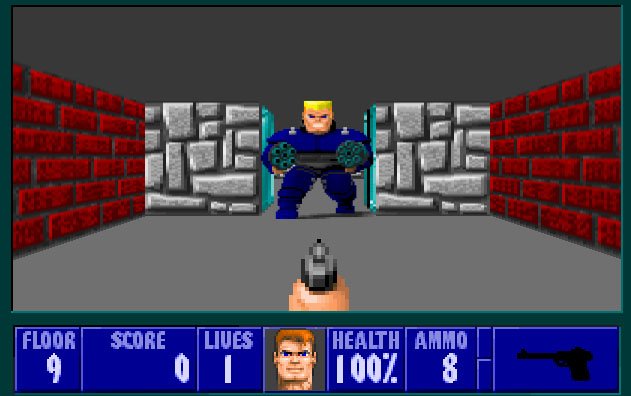
Story-wise, the game is pretty light, being set into two trilogies of episodes. The first trilogy follows our protagonist, William B.J. Blazkowicz escaping from the castle (episode: Escape from Castle Wolfenstein), finsing some secret Nazi plans (episode: Operation: Eisenfaust) and finding and assassinating Hitler (episode: Die, Fuhrer, Die!). The second trilogy, The Nocturnal Mission, is set before the first one, with B.J.'s efforts to thwart a Nazi chemical warfare plan and killing the general responsible for these plans.
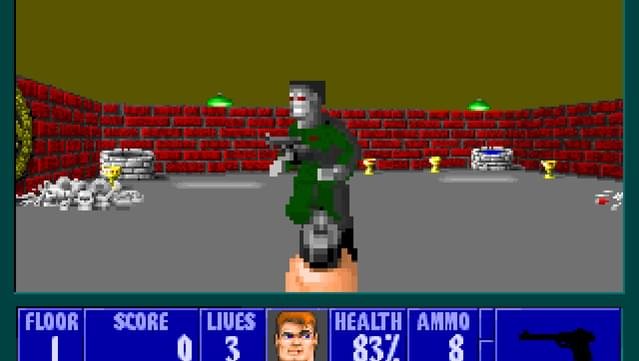
The game had a sequel called Spear of Destiny which dealt with the occult and supernatural, featuring mutant enemies. The entire goal of this game was returning the Spear of Destiny to Versailles after the Nazis stole it for their experiments. The gameplay remained the same from the original game throughout this sequel. Another two episodes were created by FormGen: Return to Danger and Ultimate Challenge, which recycled the plot from Spear of Destiny.
The Legacy
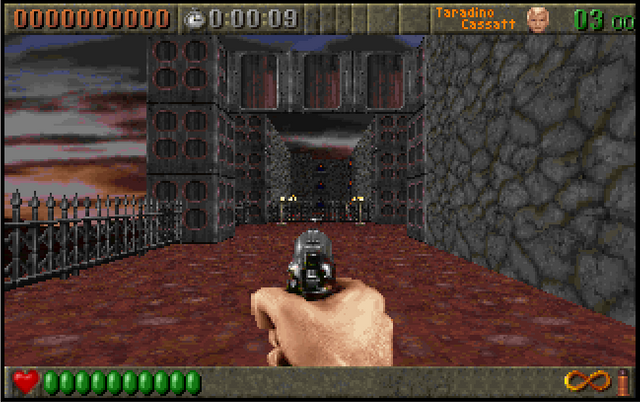
Technology-wise, numerous games used its engine, most importantly Rise of The Triad (which you should play), which initially was supposed to be a Wolfenstein Sequel, but also most of the games made by Capstone, like Corridor 7 and Operation Bodycount, and JAM Productions' Blake Stone series (which you should also play).

It cannot be denied that Wolfenstein 3D brought a new age with it. It may not have been the first FPS, but it was one of the best at its time and it lead to the creation of even more first person shooters. So, yes, the game deserves the title of the granddaddy of first person shooters.
Images: cover, 1, 2, 3, 4, 5, 6, 7, 8, 9.
Archdruid Discord: https://discord.gg/cw3z74s
GamingHD Discord: https://discord.gg/CZSXJwy